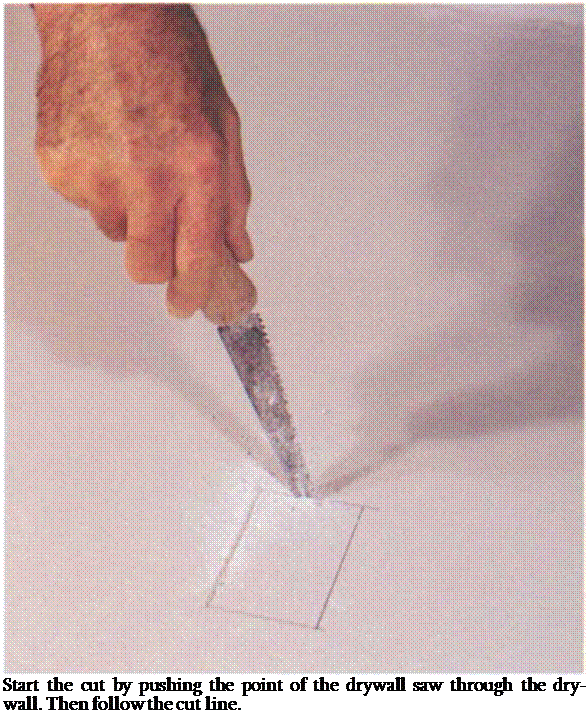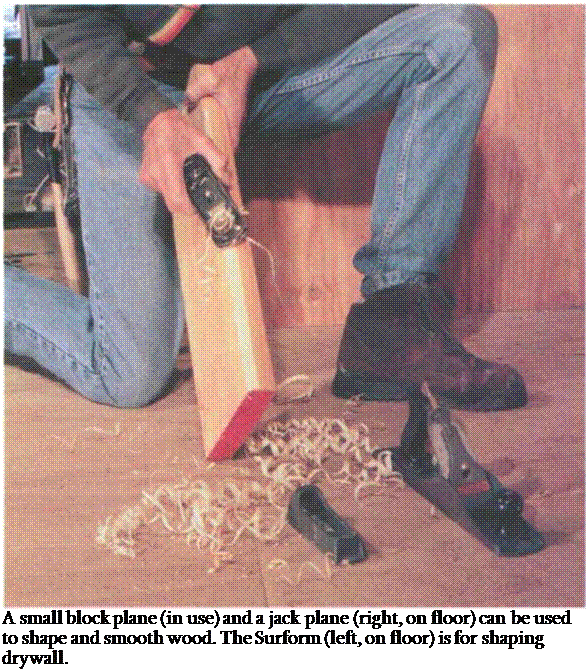Knives
 Knives have their places in a carpenter’s toolkit. Most every carpenter has a utility knife, and many also carry a pocket knife. A utility knife can be used to open packages, to cut building paper, fiberglass insulation, composition shingles, linoleum, and drywall, as well as to
Knives have their places in a carpenter’s toolkit. Most every carpenter has a utility knife, and many also carry a pocket knife. A utility knife can be used to open packages, to cut building paper, fiberglass insulation, composition shingles, linoleum, and drywall, as well as to
Safety for cutting tools
• When using a cutting tool, don’t force it. Just like people, every tool has its own pace.
• When working with sharp tools, pay close attention; don’t allow yourself to be distracted.

sharpen pencils. The most common utility knife has a retractable blade, so it’s easy to carry it in a nail apron or on your toolbelt without fear of accidentally cutting yourself. Extra blades are stored in a compartment in the handle.
A pocket knife with a good carbon-steel blade is another tool that has many uses in carpentry work. I use mine to sharpen pencils, to cut strings, to open packages, and to trim excess caulk from around windows. Keep the blade sharp with a sharpening stone. If the knife becomes difficult to open and close, apply a little three-in-one oil on it.
SHAPING TOOLS
One of the first hand tools I learned to use as a young man was the handplane.
I vividly recall watching a carpenter shape the edge of a door using a long, shiny jointer plane. Long curls of wood rose from the plane, covering his work area and filling my nostrils with the sweet smell of pine. Much of the shaping work I do these days is done with power tools, but I still find use for hand – planes, chisels, files, and rasps.
I bring a jack plane and a small block plane to all my jobs. I use a 14-in. jack plane to shave a door to fit in its opening or to smooth the rough edges of a board. I use the block plane to round a corner of a board or to remove a bit of wood from a piece of molding. The small block plane is very handy because it fits easily into a toolbelt or toolbucket and can be used with one hand.
When a piece of drywall doesn’t quite fit, I use a small, БУг-іп. Surform to trim it down (see the top photo on the facing page). It resembles a handplane, but instead of a cutting iron, the Surform has a plate on the bottom that looks like a food grater. It’s also handy for rough shaping other materials as well.
Using a handplane A handplane is easy to use if you follow a few simple guidelines. For optimum performance, keep the blade sharp and clean. A sharp blade will remove wood smoothly, leaving long shavings. A dull blade will chop at the wood, leaving a rough surface. Like any tool, it works better when it is kept clean. You can clean a blade with paint thinner or steel wool. When you are finished cleaning it, coat the blade lightly with three-in-one oil.
It’s also important to adjust the blade so you remove only a small amount at a time, keeping the shavings paper thin. Trying to remove too much wood will just clog the plane.
Hold the plane flat against the surface of the wood and cut with the grain. If you cut against the grain, you’ll feel it. The plane will cut into the wood fiber and will jump, resulting in torn fibers and a rough cut. When you are finished with a handplane, retract the blade so that it won’t get nicked. I wrap mine in a soft cloth for storage.






Leave a reply